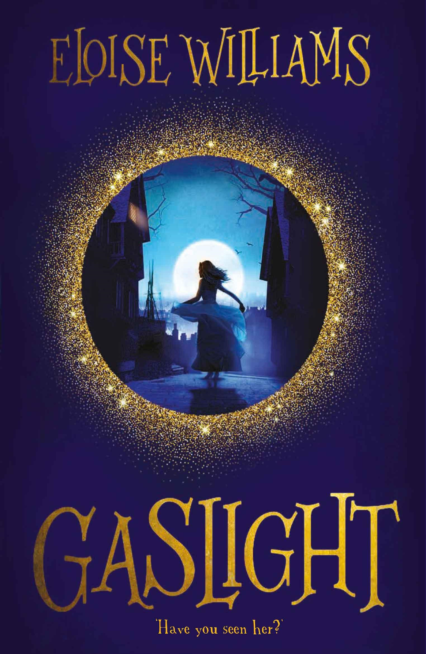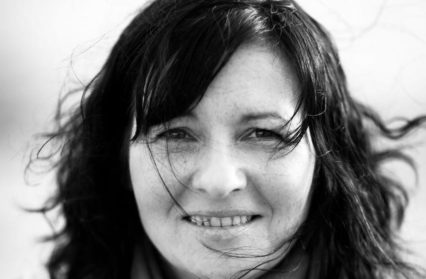In 2017 Wales Arts Review named Eloise Williams‘ Gaslight our Young People’s Book of the Year; here the author leads us through the tortuous and joyful experience of creating the book.
As a children’s and middle grade writer I am often approached by people who tell me they want to ‘be a writer’ but don’t feel they have the skill or confidence to write a novel for adults. They are going to ‘have a go’ at writing a children’s book. As if it is easier. As if less words means less skill needed. As if children deserve less effort.

I pride myself on being living proof that it is not easier. When I was writing Gaslight I struggled, shouted, self-medicated, wondered why I’d started, knew I had to finish.
Once a story takes you over completely it becomes easier, certainly, but those first drafts, where you are trying to find the best possible narrative and discovering how to shape your story into a thrilling read are tough. Hard work, yes. Exciting, yes. Frustrating, yes. Easier than writing for adults? No.
I’m a collector, a hoarder, an ex-actor, a procrastinator. I spent an extraordinarily long time pulling together ideas for Gaslight. I walked the city’s streets, interviewed family about their memories of Cardiff, internet searched, visited museums, read history books, searched through archives, wandered Victorian graveyards picking out names – although Pernicious Sid was named after a day of medical roleplay in which I was suffering with Pernicious Anaemia. I undoubtedly got some things wrong.
Cardiff is, in itself a character in the book. The city feeds imagination. I always knew I was going to write a book set there.
When I was young my mother would walk me and my sister along Queen Street and ask us to tell her about the interesting things we saw. A way to pass time without having to spend money, to distract us from our aching feet, to engage us in telling stories. Because of this and the years I spent there as a tweenager, seeing the city from a young person’s perspective wasn’t that much of a stretch – more a muddled and incoherent sequence of recollections. It also taught me to notice the small things and to look up, so the details of the skyline were already imprinted on my brain. Of course, I wasn’t around in Victorian times but the city, with all its recent changes, still has so much of its history at the surface and it is there for the pickings.
I knew that the story had to be good. I mean really good if I was going to set it in Victorian times and capture a modern reader’s attention.
I’m currently touring schools with Gaslight workshops and am also a practitioner on Lead Creative Schools projects so am often face to face with my readers. It gives one enormous clarity of mind to be given honest, unadulterated feedback, and also sparks the imagination for other stories.
Young readers are the harshest of critics and the most generous cheerleaders when they find a story which speaks to them. I am always mindful that many of them may not own a single book, that every book could be the book which hooks them into reading, or the book which turns them off it.
Far too many of the children I meet are living in areas of deprivation and having to deal with poverty and the most debilitating of circumstances. In Gaslight I wanted to give them a character who was not helpless even in the most hopeless of predicaments realising that unless I fell in love with my main character, it was highly unlikely that a reader would.
Nansi, is a foundling of sorts. Living in a cruel world, tricked and mistreated, having to be brave at every turn, raising herself and making her own decisions. Therein lies the real inspiration for the book and for her character. The children I meet on my travels, the courage they show every day, the voices they have given me and the stories they tell, the decisions they have to make to survive. She may be living in different times but essentially, she is doing the same as they are, making her way in the world, trying to figure out how life works, negotiating, battling, using her wits.
She is a celebration of all the good things I see in young people. The way her story is told, I hope, tells them they can take control.
As a lifelong depression and anxiety battler I understand darkness well. I also understand the proverbial light at the end of the tunnel. I don’t mean in a religious way but rather the concept of hope and this is important to me when I write. Lots of my young readers ask me how I wrote Gaslight and I give them the honest answer – I worked hard.
To break this down further:
I robbed my childhood imagination. The lamppost from The Lion, the Witch and the Wardrobe lights the way to another world, a place to battle loneliness, a place where good wins out. It was where I’d go to escape yet another scrap with my sister.
A Victorian boot washed up on the sand. An actual Victorian child’s boot still complete with a nailed on sole. Actually, fairly incomplete and mostly sole, but a key to the past all the same and a sign that I need to really research the clothes of the time. Thankfully this led me to arsenic poisoning, one of the many less cheerful elements of the story.
I used my theatrical knowledge. Years of being stuck in backstage squalor in a state of nervous tension while I waited for my moment to tread the boards.
Staring out of the window when I studied for a degree at the Royal Welsh college of Music and Drama. I was listening to the lecture of an eminent professor of theatre. Learning about Sir Henry Irving and Dame Ellen Terry, imagining how their relationship with Bram Stoker and the Lyceum Theatre, where they all worked together, had influenced Stoker’s fiction. Gazing down at Bute Park beyond the glass as the mists started to rise, imagining the theatres in Victorian Cardiff and what it would have been like to have been a star in those days. Then researching.
Researching some more with my ancestry. My Grandad Arthur Warren Howe was from Cardiff. His father was a ship’s pilot and his mother played the piano for the silent movies at the Empire Cinema, which was formerly the Empire Theatre, and features largely in the book. They lived on Clarence Embankment and watched the regattas from their bedroom window.
Playing with words and language, plotting, re-plotting, turning Nansi into a female version of Bruce Willis’s character in Die Hard. Watching her throw herself through a window on Cathedral Road in one chapter to be buried alive in Cathays cemetery in the next. After a stern rap on the knuckles from my lovely editor Janet Thomas of Firefly Press, I took those scenes out and replaced them with better ones.
I sat at my computer and worked and worked and worked and made mistakes and then tried to put them right. It’s not a perfect story but it’s written with heart.
I’m thrilled that Gaslight was listed with such beautifully written books and winning Wales Arts Review’s Young People’s Book of the Year 2017 is an enormous honour. There is such a plethora of beautiful, moving, intelligent, articulate work for young people coming from Wales and I’m delighted to be a part of it.
And a final word on behalf of children’s writers. We are not on a path to writing books for adults. We aren’t practising our skills on younger readers for when we can write a ‘proper’ book. We can and do already write ‘proper’ books. We are making the readers of tomorrow. And if you don’t believe me I challenge you to go into a classroom with a story that isn’t well told.
Gaslight is available to buy now from Firefly.












